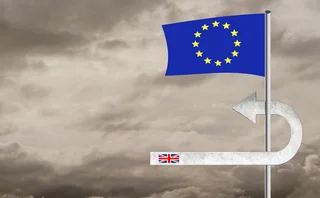
Risk-free isn't what it used to be
In the last week of January I found myself in a meeting room next to the UK's Houses of Parliament, listening to the Treasury select committee questioning the senior executives of Standard & Poor's, Moody's and Fitch about credit ratings.
The committee chairman, John McFall MP, succeeded in forcing some begrudging admissions from the ratings men about wrong assumptions and conflicts of interest. But perhaps the most telling aspect of the proceedings was the sense of bewilderment over the location of safe ground in the financial system. You could assume that governments were safe and that banks were risky. Or you might start from the position that banks were safe and governments were risky. But what about the ability of one to topple the other?
At this point, the ratings men started publicly bickering among themselves. Meanwhile the look on the faces of the assembled MPs grew more and more grave. Bank mortgage assets had been downgraded, so had the banks, and now the countries too. So what would be the implication of the UK bank bailout package - and explosion in government borrowing - on the UK's sovereign credit rating?
For pension funds and insurance companies, there is similar bewilderment at what the galloping pace of bank nationalisation and restructuring will do to their definitions of safety. Metrics for 'risk-free' assets and liabilities adopted in balmier times have become divisive when liquidity is at a premium.
Consider swap rates, the market price of a stream of Libor floating-rate cashflows. Swaps used to be a staple of bank asset-liability management (ALM), converting a long-dated fixed-rate asset into one yielding a spread above Libor funding costs. Massive deleveraging has forced banks to receive swaps as they close out positions, pushing down the swap rate. That increases the 'market-consistent' liabilities of insurers that use swaps for discounting.
One UK life company CFO recently suggested to me, only half in jest, that a 'negative basis trade' be used for discounting instead of the swap rate. This amounts to buying a corporate bond and credit default swap (CDS) protection at the same time. Assuming one has the stomach for CDS counterparty risk, it is possible to earn a 'risk-free' rate of around 200 basis points on such trades. Unfortunately for those who already own risky corporate bond portfolios, this only works if one buys into the trade today.
Ultimately, insurers and pension funds will bail out the financial system, buying and holding onto the assets banks create in order to lend to the real economy. Before they do that, they will want to know more about the implications of default and nationalisation on their existing balance sheets. Only then will we know what 'risk free' actually means.
It is going to be an interesting journey, but I will be watching it from a different vantage point, as I leave Life & Pensions to write a book on the history of financial innovation and the credit crunch. It has been a great privilege to create Life & Pensions and get to know you all as a community over the last three and a half years.
However, as I hand over the reins to my deputy Aaron Woolner, I am confident Life & Pensions will be in capable hands.
Only users who have a paid subscription or are part of a corporate subscription are able to print or copy content.
To access these options, along with all other subscription benefits, please contact info@risk.net or view our subscription options here: http://subscriptions.risk.net/subscribe
You are currently unable to print this content. Please contact info@risk.net to find out more.
You are currently unable to copy this content. Please contact info@risk.net to find out more.
Copyright Infopro Digital Limited. All rights reserved.
As outlined in our terms and conditions, https://www.infopro-digital.com/terms-and-conditions/subscriptions/ (point 2.4), printing is limited to a single copy.
If you would like to purchase additional rights please email info@risk.net
Copyright Infopro Digital Limited. All rights reserved.
You may share this content using our article tools. As outlined in our terms and conditions, https://www.infopro-digital.com/terms-and-conditions/subscriptions/ (clause 2.4), an Authorised User may only make one copy of the materials for their own personal use. You must also comply with the restrictions in clause 2.5.
If you would like to purchase additional rights please email info@risk.net
More on Insurance
The future of life insurance
As the world constantly evolves and changes, so too does the life insurance industry, which is preparing for a multitude of challenges, particularly in three areas: interest rates, regulatory mandates and technology (software, underwriting tools and…
40% of insurers fail to specify climate as a key risk – LCP
Despite regulators’ urging, many UK and Irish insurers omit climate from risk statements, says report
Libor leaders: Prudential takes SOFR for a test drive
Test trades have allowed US insurer to start getting used to a life without Libor
Fed to push ahead with capital regime for single US insurer
Prudential faces risk capital add-ons unless it sheds “systemically important” label
Brexit dims hopes for Solvency II change in UK
Lawyers say political tensions may have killed off chance of reform, following PRA U-turn
BoE creates volatility adjustment ‘stepping stone’ for insurers
Dynamic VA may be used for assets that fail to qualify for matching adjustment, say experts
No plans to scrap systemic insurer rules, says IAIS chair
A US regulator claims Europeans asked IAIS to chart own course after FSB moved to ditch G-Sii list







